Arabic is one of the most fascinating and beautiful languages in the world.
It’s also one of the most useful languages to know that opens you up to a huge breadth of history, culture, and traditions. Beyond aesthetics, it’s also used in one of the most geopolitically important parts of the world.
That’s why it’s no wonder that it’s becoming more and more popular and relevant to learn Arabic.
Having said this, Arabic takes some time and effort to learn. It’s both very different from English, and at times, highly complex. But don’t let that discourage you! It’s definitely worth the effort for all of the benefits that learning Arabic can bring to your life.
And even if it can be challenging to learn Arabic, it really helps you grow in your own linguistic prowess. Don’t be surprised if you find that learning other languages after Arabic comes easy!
In this article, I’ve compiled some of the most frequently asked questions about learning Arabic to give you an overview of everything you need to know about the Arabic language and how to go about learning it.

Pro Tip
And by the way, if you’re thinking about learning Arabic, then check out my course, Arabic Uncovered.
Arabic Uncovered is an online Arabic course that helps you learn Arabic through the powerful StoryLearning® method. I can guarantee you that it’s both fun and effective.
If you’re ready to get started, then click here to find out more and for a free 7-day trial of the course.
Here’s what we’ll cover in this article:
If you’ve ever asked yourself any of these questions, then this article is for you. And if you want to skip ahead to different parts, just click the section that interests you.
Table of Contents
I’ll start by going into some of the basics of Arabic and Arabic culture. I’ll also go into one of the biggest challenges in learning Arabic – verb conjugation and inflection. Lastly, I’ll finish off with some recommendations on how you can quickly and effectively learn Arabic.
Because this post covers everything you need to know as a beginner, it’s quite long! I’ve also prepared a special PDF version of the post so you can download it and read it anywhere, anytime.
Why Learn Arabic?

There are plenty of reasons why you should learn Arabic! In fact, it’s probably one of the most useful languages to learn for a number of reasons. Here are some reasons why you should learn Arabic.
1. Arabic Is Spoken All Over The World
This reason on its own should be enough to convince you to start learning Arabic.
While many experts have different opinions on just how many people speak Arabic, you can safely assume that there are somewhere between 350-450 million Arabic speakers around the world, making it the 5th most spoken language globally.
And it’s spoken everywhere! As you’ll find out more later in this post, Arabic speakers live not only in the Middle East and North Africa, but also across Europe, sub-Saharan Africa, the Americas, and Asia.
Because it’s so common, it’s even one of the UN working languages, making it highly influential. All this means that you’ll definitely have a leg up in advancing your career if you know Arabic.
2. Expose Yourself To Arabic Culture
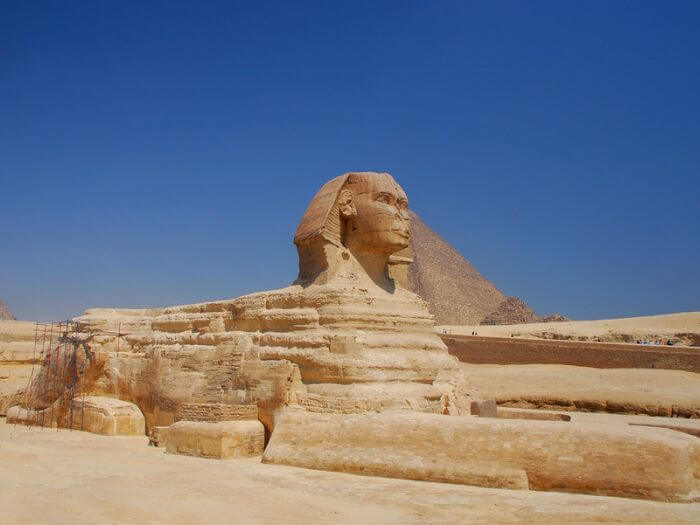
Arabic has a long history and tradition that has shaped an incredibly rich culture that lives on today.
First off, it’s the language of the Qur’an, the holy book for close to 2 billion Muslims around the world.
Beyond being an important religion for its many followers, Arabic and its role in Islam has shaped a lot of scientific, mathematical, and cultural innovations throughout history.
In fact, medieval Islamic civilizations played a vital role in spreading scientific and mathematical discoveries throughout the world. So it’s no wonder that we continue to use numbers today that we call Arabic numerals.
Arabic is also spoken in some of the most fascinating places to visit as a tourist, whether it be the pyramids in Egypt, Petra in Jordan, or the ancient city of Carthage in Tunisia. Learning Arabic will make these trips even more memorable by allowing you to speak with locals, who are also very hospitable.
3. Arabic Is Linked To Many Other Languages
As I already mentioned, Arabic language and culture has had a large role in history. That’s why there are lots of words and grammatical features that are similar to other languages.
So if you know enough Arabic, you’ll have a leg up to learn other languages that are spoken in its vicinity.
Languages including but not limited to Persian, Turkish, Kurdish, Urdu, Hindi, Swahili, and Somali also all feature lots of loan words that originally come from Arabic.
On top of this, the grammar of Arabic is pretty similar to languages like Hebrew, which can help you in learning any one of these languages down the line.

4. Important Political And Economic Hub
Arabic is used in many countries which are both important geopolitically, as well as important for trade and business.
For example, many Arabic-speaking countries have cities that are hubs for businesses, like Dubai, Doha, Riyadh, and Cairo, and attract a lot of foreign investment
Many of these countries are also important for government actors across the globe because of their wealth of natural resources.
Combined together, this makes Arabic really useful to know if you’re trying to advance your career or develop new business opportunities.
5. Keep Your Brain In Shape
Lastly, learning new languages in general is a great way to keep your brain active, and helps you to improve your memory and better learn and remember new things.
With Arabic, this is even more the case since you’ll be navigating complex grammar rules that challenge your linguistic skills on a regular basis.
By learning Arabic, you’ll be sure to boost your brain functions and memory, preparing yourself to learn other languages and expanding your horizons.
Key Features Of Arabic

Arabic is one of the most commonly spoken languages in the world, with roughly 350-450 million speakers. It’s an official language in many countries and non-sovereign entities.
Arabic-speaking countries are mostly in the Middle East and North Africa, as well as some countries within the wider region, and include Algeria, Bahrain, Chad, Egypt, Iraq, Israel, Jordan, Lebanon, Libya, Mauritania, Morocco, Oman, Palestine, Qatar, Saudi Arabia, Somalia, Sudan, Syria,Tunisia, United Arab Emirates, and Yemen.
The countries with the largest populations in this list host the highest number of Arabic speakers, like Egypt, Algeria, Morocco, Iraq, and Sudan. In fact, Egypt alone has a population of 102 million people!
In addition to these countries, Arabic is spoken all over other parts of the world by members of the Arab diaspora, including in countries in Europe, Africa, the Americas, and Asia.
That’s why you’ll find that you’ll never be short of company for people you can practice Arabic with!
And since Arabic is spoken across a vast geography, there’s a lot of diversity in the way it is spoken across different countries.
With that said, here are some of the key features of Arabic. You can learn about them in the video below or keep scrolling to read about them.
1. A Brief History Of Arabic
Arabic is a part of the Semitic family of languages, which includes other languages with similar grammar and vocabulary features like Hebrew, Aramaic, and Amharic.
The fact that it’s part of the Semitic family of languages on its own means that there are huge differences between learning Arabic and other languages that come from the same language family as English (Indo-European).
Linguistics buffs think that nomadic people in the northwestern Arabian Peninsula spoke the earliest forms of Arabic more than 2,500 years ago. Many of these nomadic people were involved in trading goods like spices along key trade routes like the Silk Road.
As for the history of the Arabic script, there were many forms of writing that came before the classical script that Arabic uses today, such as the Nabatean and Syriac scripts.
To this day, there’s still a lot of debate around where it came from exactly, but the Arabic script that is used today came to shape right around the writing of the Qur’an, the holy book of Islam.
The rise of Islam and Islamic civilizations starting in the 6th century A.D. also meant that the Arabic language spread far and wide from the Arabian peninsula to other parts of the Middle East and North Africa.
At its peak, the Umayyad Caliphate, an Islamic civilization that ruled around the 7th-8th centuries A.D., extended from the Iberian peninsula in modern-day Spain to the Hindu Kush in Central and South Asia.
As the Arabic language spread across all of these places, the language evolved a lot and mixed together with other languages that were spoken by people living in these areas, which brings us to the next feature of the Arabic language.

2. Arabic Dialects And Modern Standard Arabic (MSA)
There are a lot of dialects of Arabic that vary from place to place. In some cases, these dialects are so different from each other that even people who are native Arabic speakers aren’t able to understand each other.
In fact, you could even say that learning some of the dialects is like learning a whole new language. Moroccan Arabic (also called Darija) is one of these dialects, which combines features of Arabic, French, Spanish, and Amazigh, a Berber language.
So then how do Arabic speakers communicate with one another? That’s where Modern Standard Arabic (MSA) comes into the picture.
This is the standard Arabic that is used in literature or in other print, and used by all Arabic speakers for written or print media. It’s the reason why when you first enroll in an Arabic course that there’s a high chance that you’ll be learning MSA.
But because it’s a standard for written text, it means that you’ll be hard-pressed to find anyone from the Arabic speaking world that actually speaks MSA.
Since there’s a difference between MSA and other Arabic dialects, you might consider learning both MSA and a dialect of your choice so that you learn not only to read and write, but also to converse with other Arabic speakers.
While this might give you more exposure to speaking, it comes with the drawback that you might get the different rules for MSA and dialects confused with one another.
Or you might just choose to skip learning MSA until later, and focus on learning one of the dialects so that you can start speaking. Ultimately, the choice is yours!

3. Writing In Arabic
You’ve likely stumbled on Arabic script in the past since it’s used in many different languages. But if you aren’t familiar with the script, you may have asked yourself how people go about actually reading it.
For starters, Arabic is written phonetically, meaning that whatever way it’s written is the way it’s pronounced. In a language like English that isn’t phonetically pronounced, a certain letter might represent different sounds.
For example, think of how “a” is pronounced differently in “car” and “cat”. In Arabic, for the most part, one letter always represents one sound.
The trickiest part about writing in Arabic is that Arabic is written from right to left, not left to right. This may feel hard at first, but once you get the hang of the way the alphabet works, it falls into place.
One cool thing about Arabic is that it’s always written in cursive. Each letter has a different shape depending on its position in a word – whether it’s the first letter (initial), in the middle of the word (medial), or at the end of a word (final).
There’s also something called diacritical marks in Arabic, which are called harakat (حركات). These marks go above or below letters, and signify short vowels or other sounds that go with the letter.
| Diacritical marks | No diacritical marks |
| اِستَخدَمَ (to use) | استخدم (to use) |
| وَلَد (boy/son) | ولد (boy/son) |
Skip The Script?
If all of this sounds complicated, then you might be wondering whether it’s possible to learn Arabic without having to learn the script.
In some cases, you might stumble on people writing in Arabic using Latin script transliterations. In other words, they might write out Arabic using the Latin alphabet.
This is also called Arabeezi, which is also known as the Arabic chat alphabet because people use it most often when chatting via phone or sending messages on the internet.
It’s pretty unique and easy to tell apart from Latin transliterations for other languages because in addition to letters from the Latin alphabet, it uses numbers to signify certain letters that don’t have an equivalent sound in the Latin alphabet.
For example, if you see the number “3” in the middle of a romanized Arabic word, it is signifying the letter “ع” (a3ain), which has no equivalent sound in English.
But as for skipping learning the Arabic alphabet and only focusing on learning using the Latin script transliterations?
I wouldn’t recommend it because knowing the Arabic script is key to being able to navigate life in Arabic-speaking countries, because the script is used in all corners of life, including on the internet and on phone messages.
Plus knowing the script means you can follow the rules of Storylearning and get fluent by reading short stories in Arabic.
And plus, as I said before, the script really isn’t too difficult once you get the hang of it. And in fact, you’ll likely find that it’s a fun challenge to learn to write in Arabic.
4. Arabic Pronunciation
There are 28 letters in the Arabic alphabet, and each letter represents a different consonant, with several also sometimes standing in as long vowels.
For the most part, the Arabic alphabet is pretty phonetic, meaning that each letter represents a certain sound.
Some of the sounds for these letters are pretty straightforward to pronounce. For example, you pronounce the letters “ب” (baa), “ت” (taa), “م” (miim), or “ن” (nuun) in the same way that you would pronounce the letters “b”, “t”, “m”, or “n” in English.
But some of the sounds for these letters are unlike any sound in English. For example, the letter “ق” (qaaf) is a deeper “k” that you pronounce in the back of your throat, while the letter “خ” (khaa) is a “kh” sound that is similar to the sound you make when gargling water.
Another unusual letter for English speakers is “ع” (a3ain), which almost sounds like a choking sound from the back of your throat. Different, right?
Some of the most challenging letters to pronounce and tell apart are the ones that would use the same consonant in English, but are pronounced in different parts of the mouth.
Take “ت” (taa) and “ط” (Taa), for instance, where the first is a “t” that you pronounce in the front of your mouth, while the other is pronounced in the back of your throat.
Or “ح” (Haa) and “ه” (ha), where the first is pronounced as if you’re breathing out to clean a pair of glasses, and while the second is more like an “h” that you pronounce in English.
The best way to get the hang of pronouncing Arabic is by reading and listening to stories. It might not happen overnight, but you’ll likely find that you get better at pronouncing Arabic as you expose yourself to its sounds.
5. Vowels In Arabic

There are only six vowels in Arabic, which include three long vowels and three short vowels.
To start with, the three long vowels are:
- aa – which you can write out as ا (alef)
- ii – which you can write out as ي (yaa)
- uu – which you can write out as و (waw)
The interesting thing about these vowels is that each of them can also be pronounced as a consonant. For example, ي (ya) can sound like “y” while و (waw) can sound like “w” depending on the position of the vowel.
Here are a few examples:
- فيل / fiil (elephant)
- يعني / ya3ni (like)
- فول / fuul (fava beans)
- وجه / wajah (face)
The three short vowels are “a”, “i” and “u”, so the same sound as the long vowels, but just much shorter when you enunciate them. But here’s where things can get a bit more tricky. Short vowels generally don’t appear in the text you read.
That’s because Arabic indicates short vowels using three diacritical marks, the fatHa for “a” which is a short line above the consonant, the kasra for “i”, which is a short line under the consonant, and dhamma for “u”, a small و (waw) above the consonant.
If this sounds daunting, don’t worry – beginner textbooks and other learning materials generally include these marks throughout the text, so you won’t be left having to guess the vowel to the consonant.
And as you progress, you start getting used to the different words, so you’ll be able to know exactly what vowel comes with each consonant in a word.
6. Arabic Grammar

The most obvious difference between Arabic and English is the grammar. There are some linguistic features that are pretty unique to Arabic.
One of these features is conjugating verbs. In Arabic, most verbs have a set of three root letters that you use to make different variations to create different tenses and verb forms.
For instance, if you want to say “I learned” and the verb for “to learn” is 3lama / علم, then you add tu / تُ at the end of the verb, making it 3lamtu / علمتُ (I learned).
Or if you want to say “he learns”, then you add “ي” (yaa) at the beginning of the word: ya’3lam / يعلم (he learns).
Another grammar feature that is pretty unique to Arabic is plurals. For the most part in English, all you need to do is add an “s” at the end of a noun to make a noun plural (boy → boys).
But with Arabic, it’s not that simple. While this logic works in some cases, in other cases, the noun retains the root letters, but morphs into an entirely different word.
Take the word kitaab / كتاب (book), for instance. The plural form of kitaab / كتاب (book) is kutub / كُتُب (books). Or the word baab / باب (door) – the plural form is abwaab / أبواب (doors).
What this means is that oftentimes, the best way to learn new vocabulary is to learn both the singular and plural form of the word at the same time, as well as the accompanying diacritical marks. That way, you don’t have to go back later to learn the plural form.
What Do I Need To Know About The Culture Of The Arabic World?

There are a couple of things that are important to know about the culture of the Arabic world.
Firstly, it is incredibly diverse. Since the Arabic-speaking world spans multiple continents, Arabic speakers are not a monolithic group, and there’s a huge amount of variation in culture depending on location.
Second, the culture is very rich. The Arabic language comes from a long history, tradition, and culture. The Arabic world is also associated with a range of literature, art and architecture, and innovations in math and science.
Third, while a significant number of people in the Arabic world are Muslim, there are also large Christian communities in some countries in the Middle East and North Africa, such as Coptic Orthodox Christians in Egypt.
And lastly, in recent years, the Arabic world and its culture has often been misunderstood, especially by people and governments in the Western world.
But the reality is, a lot of this is a result of misrepresentation in the media and the way Western media has tended to report events taking place in the Arabic-speaking world. If you do go to the Arabic-speaking world, you’ll be amazed by how hospitable the people are.
Want to download a PDF of this article to read later? Click here to get your FREE copy.
Is Arabic Hard To Learn?

Honest answer? Yes and no. But it all depends on you and on your own personal goals for learning Arabic.
If you ask linguistic experts, they might be quick to tell you that Arabic is one of the hardest languages to learn for English speakers.
In fact, the Foreign Service Institute (FSI) rates it as a Category 5 language alongside other hard-to-learn languages like Chinese, Japanese, and Korean.
But here’s my take on this question.
There are some features of Arabic that aren’t always easy. Most people who aren’t familiar with Arabic often assume that the writing is the hardest part.
But in reality, the writing is pretty straightforward once you get used to it. When I started learning Arabic, it only took me about a week to adjust to reading and writing from right to left.
Arabic Pronunciation
What’s not always easy is Arabic pronunciation. Pronunciation is key if you want to be able to communicate with locals and be understood. But there are sounds in Arabic that just don’t exist in English or other similar languages.
This means that it’ll take some time to train your mouth to make out some of the sounds that are used all the time in Arabic.
Arabic Grammar
What’s even less easy at times is the grammar. As I mentioned before, there are some features of Arabic grammar, like verb conjugation and plurals, that can trip you up.
And if you’re determined to learn MSA, then you’ll find even more complicated grammar rules as you progress, such as when you start learning case endings, also known as i3raab / إعراب.
That said though, a lot of this grammar is a lot more manageable to learn if you’re trying to learn a dialect, so I wouldn’t be discouraged if your overall goal is to learn to speak fluently.
At the end of the day, exposing yourself to opportunities to speak and listen to Arabic is a lot more important than knowing the intricate details of Arabic grammar.
Arabic Resources
Another point that makes learning Arabic harder is that unlike other more commonly studied languages like French or Spanish, the resources and study materials that are available for learning Arabic are a lot more limited, especially for learning one of the dialects.
That’s not to say that the existing resources are sub-par, but just a reflection of the market – there just aren’t as many English speakers trying to learn Arabic, so the choices in resources are a bit more limited.
Fortunately, there’s a new wave of online, accessible Arabic resources that are cropping up specifically for helping you learn one of the Arabic dialects or MSA.
So in summary, the answer is: it depends. But with some determination and the right attitude, you can make the challenge a lot more fun.
Arabic Verbs And Their Inflections

There are lots of languages that require you to conjugate verbs depending on the person or with gender. Think in Spanish how you’d say quiero to say “I want”, but quieres to say “you want”.
Arabic takes this to a whole other level, where you conjugate for the person (first, second, or third), gender (masculine/feminine), and plurality (singular/dual/plural), all at the same time.
Taking the verb 3lama / علم (to learn). Here’s a table breaking down the different ways you can conjugate verbs by person, gender, and plurality:
| Verb Conjugation: 3lama / علم (to learn) | |||||
| Person | Gender | Plurality | Verb Conjugation | Pronunciation | Meaning |
| 1st person | Masculine/Feminine | Singular | أَعْلَمُ | a3alamu | I learn |
| Plural | نَعْلَمُ | na3alamu | We learn | ||
| 2nd person | Masculine | Singular | تَعْلَمُ | ta3alamu | You learn |
| Dual | تَعْلَمانِ | ta3alamaani | You learn | ||
| Plural | تَعْلَمونَ | ta3alamuuna | You learn | ||
| Feminine | Singular | تعْلَمينَ | ta3alamiina | You learn | |
| Dual | تَعْلَمانِ | ta3alamaani | You learn | ||
| Plural | تَعْلَمْنَ | ta3alamna | You learn | ||
| 3rd person | Masculine | Singular | يَعْلَمُ | ya3alamu | They learn |
| Dual | يَعْلَمانِ | ya3alamaani | They learn | ||
| Plural | يَعْلَمونَ | ya3alamuuna | They learn | ||
| Feminine | Singular | تَعْلَمُ | ta3alamu | They learn | |
| Dual | تَعْلَمانِ | ta3alamaani | They learn | ||
| Plural | تَعْلَمْنَ | ta3alamna | They learn | ||
A couple of points to keep in mind that make Arabic verb conjugation different from English are:
- In Modern Standard Arabic (MSA), there are specific pronouns and verb conjugations for when there are two people in the second and third persons (the dual form): antuma / أنتما (you (dual)) and huma / هما (they (dual)).
- In English, “you” and “they” are the only words used for referring to someone or a group of people in the second or third person. But in Arabic, there are masculine and feminine forms that result in different conjugations.
- Sometimes, the verb conjugation for certain subjects can be the same. For example, you can say ta3alamu / تَعْلَمُ both to mean “you learn (masculine)” and “she learns”.
If all this sounds complicated, don't worry! A lot of the verb conjugation systems are a lot more simplified in Arabic dialects. And with time and practice, you’ll be able to tell the difference between these conjugations.
6 Pitfalls To Keep In Mind When Starting To Learn Arabic

As you start learning Arabic, there’s a couple of pointers to keep in mind so that you don’t get bogged down by the learning process.
1. Don't Translate
Using online dictionaries from English to Arabic might feel like a good way in the moment to make yourself understood or to help you in submitting a course assignment.
But with Arabic, definitely don’t do it.
Generally speaking, online translators are not a great idea with Arabic because it’s a language that uses diacritics to help you to pronounce the word correctly.
But the problem is, these diacritics don’t always appear when you use online translators, which means that you might mispronounce the word in real life.
Secondly, online translators don’t really work well for translating words into Arabic dialects. Different dialects of Arabic might use different words for describing the same thing, so you likely won’t get the nuance you need using online translators.
If you do need to use a dictionary, then you can use the Hans-Wehr Dictionary App instead, because this will give you a breakdown of the meanings of different words depending on the way it’s pronounced.
2. Don’t Set Unreasonable Expectations
It’s important to recognize that learning Arabic is not going to be as easy as learning another European language like French or Spanish.
That’s why it’s important that you’re fair to yourself and to not set unrealistic expectations. The U.S. Foreign Service Institute (FSI) estimates that learning Arabic takes 88 weeks of consistent classroom time to get to a proficient level. That’s over a year and a half!
Because of this, the chances are that you’re not going to be at the C2 level in Arabic in the space of 3 months. And this is even less so if you don’t set a structured learning plan that helps you meet your goals.
What can you do instead? Try setting incremental goals that are both reasonable and help encourage you to keep progressing in learning Arabic.
And if you’re really trying to learn how to speak Arabic in a shorter amount of time, then I’d definitely recommend focusing on learning an Arabic dialect instead of trying to master the intricacies of MSA.
And no resource is better than Arabic Uncovered, which teaches you Arabic through the power of story. Check it out!

3. Don’t Be A Perfectionist
This pointer applies if you’re trying to learn any language. Trying to be a perfectionist is only going to trip you up and is going to make it much harder to start speaking fluently and confidently.
One of the best ways to try and practice without worrying about making mistakes is by finding an Arabic-speaking friend or speaking partner that you can practice with on a regular basis.
When you do this, make sure to pick someone who not only fits your needs and learning style, but also isn’t always looking to critique your mistakes.
That’s because it’s important to make sure that you don’t overly worry about making mistakes, as this can just lower your confidence, which you need for learning any language.
You can also try practicing with simple writing prompts, such as by keeping a diary in Arabic, that you can share with an Arabic-speaking friend to check for any glaring mistakes.
The most important thing is to not let the mistakes deter you from progressing in learning Arabic.
4. Focus On The Language You Already Know
If you don’t know the specific word in Arabic that you want to use when speaking, that’s okay! Rather than stopping a conversation to find the exact word, focus on the language that you already know.
Why do I say this? The process of trying to explain yourself using different words in itself is a way of practicing speaking and becoming more fluent.
Say you don’t know how to say “I felt remorse”. Instead of stopping the conversation to look up the word in Arabic for “remorse”, you can explain yourself in Arabic by saying “I felt bad because of the things that I did in the past”.
Even if it means using more words, what matters at the end of the day is making yourself understood.

5. Avoid Memorising Long Vocabulary Lists
Spending too much time trying to memorise long vocabulary lists is a common pitfall when learning any language. It not only makes your brain hurt, but it also takes you away from opportunities to practice using the language in context.
With Arabic, it’s even more important to keep this in mind because there’s a lot of vocabulary. You’ll be amazed at how often you’ll find that there are five different words you can use in Arabic to describe something that you’d normally only use one word for in English.
It’s also important because the vocabulary varies a lot by dialect. That’s why it’s worth picking a dialect that you want to learn, and focusing on learning the vocabulary specific to it so that you can start speaking right away.
6. Don’t Forget To Make It Fun!
In the midst of studying and trying to become fluent, it’s easy to forget that Arabic is a beautiful, unique, rich, and fascinating language, and that there’s a lot of joy in learning it.
At the end of the day, if you’re having fun learning Arabic, then the chances are that it’s more likely to stick.
What’s The Best Way To Become Fluent In Arabic?

Now that you know what to avoid doing when learning Arabic, let’s find out about some of the best ways that you can start learning Arabic today. I’m sure that following these steps will help you start speaking in Arabic fluently in no time.
1. Enroll In Arabic Uncovered To Learn The Fundamentals (And More!)
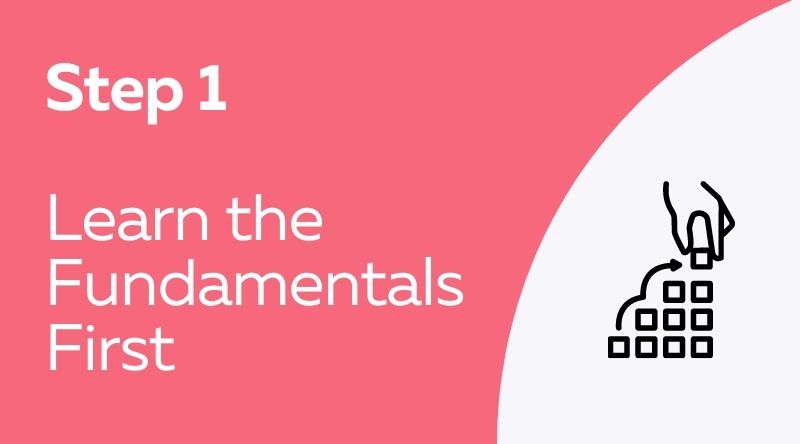
Like many of my other courses using the StoryLearning® method, Arabic Uncovered teaches you Arabic through the power of story.
Your brain is hardwired to learn languages through stories, and this course takes that fact to help you reach your language learning goals.
With this course, you’ll be reading and listening to stories in Arabic, and you’ll be amazed at how quickly you progress. Click here for a free 7-day trial of the course.
2. Set Short And Long-Term Goals
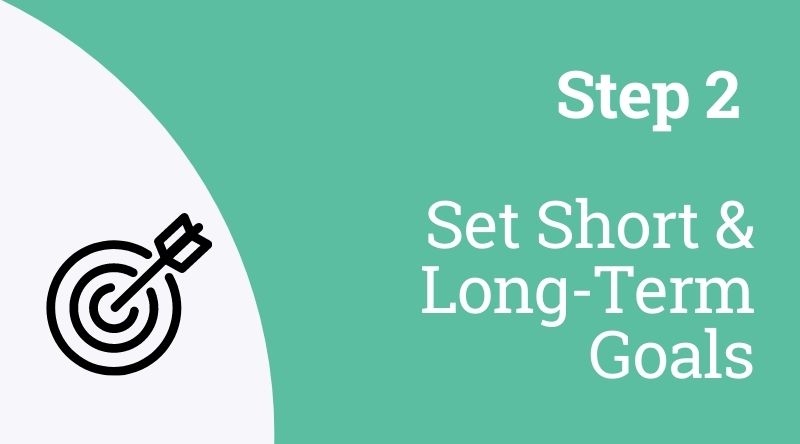
Becoming fluent is understandably the main goal for any language learner. But fluency takes time, and is a long-term goal. Overly focusing on whether you’re completely fluent might demotivate you and bog you down as you try to learn Arabic.
That’s why it’s really important to also set short-term goals so that you can make small but steady steps that are all helping you progress towards fluency. Being able to meet these short-term goals will help you stay motivated as you keep on learning.
One short-term goal that you can set for Arabic to get you started is to get a basic grasp of the alphabet and the writing system. Just practice writing the letters on their own at first, and then connecting them together to produce new words.
3. Learn Arabic Phrases
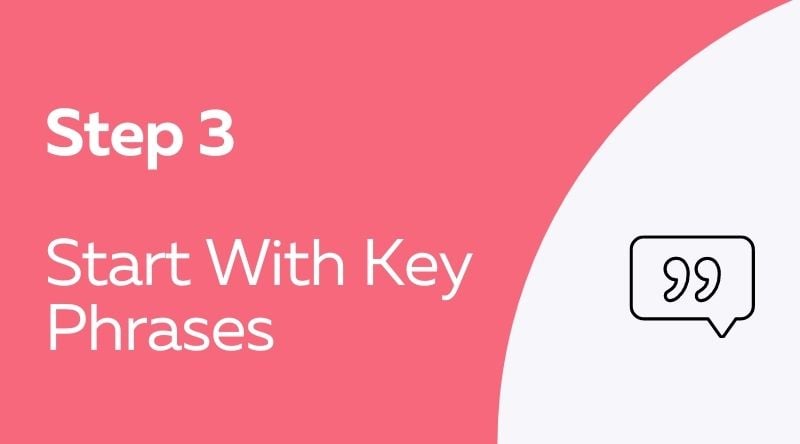
Another thing to get you to start speaking is to memorise basic phrases in Arabic that you’ll likely use on a regular basis.
You can start with basic phrases like “Hello”, “Goodbye”, “Thank you”, and “Excuse me”. But also try to learn some of the different variations of Arabic greetings that are unique to the language.
Once you’ve got a grasp of these phrases, then you can start learning sentences that you use on a daily basis when you hang out with friends, meet people for the first time, or run errands.
These might include:
- “One cup of tea, please”
- “How much is it?”
- “What’s your name?”
- “How are you doing?”
- “Where’s the bathroom?”
- “Can you help me?”
4. Don’t Get Hung Up On Grammar

Since Arabic grammar can get complicated at times, it’s important to be mindful so that you don’t overly focus on learning the grammar.
Instead, try focusing on all of the reading, writing, speaking, and listening skills you need to become fluent in Arabic.
- If you like keeping a diary or writing stories, then you can start an Arabic diary for yourself where you can freely practice writing without worrying too much about the grammar.
- Try reading books in Arabic such as basic short stories to strengthen your reading skills! And because Arabic is the perfect language for poetry, try also practicing with short poetry passages.
- Listen to some podcasts in Arabic to boost your listening skills! And if you want to get more creative, then try listening to songs in Arabic for even more practice!
- Find yourself a conversation partner so that you can practice speaking as much as you can.
And on that note…
5. Find Arabic Speakers To Talk With
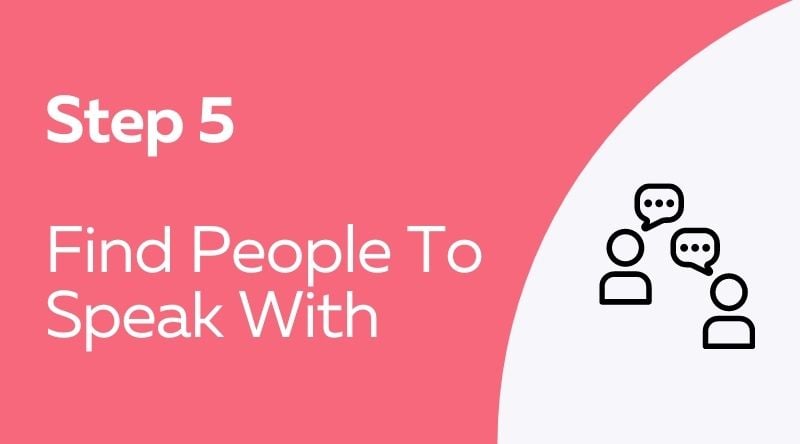
Arabic is one of the most commonly spoken languages in the world, so I’m sure you’ll be able to find Arabic speakers that you can practice speaking with in no time.
There are a lot of great online platforms like, LanguaTalk, iTalki and NaTakallam that can help you practice your speaking skills with fluent Arabic speakers for a fee.
You can also try setting up times to practice speaking Arabic with a conversation partner or set up a small group for speaking practice. That said, it’s important to make sure that you follow a couple of tips for making these sessions a success.
For instance, if you set up a schedule for conversation exchanges, then stick to it so that it doesn’t become a one-off event. Preparing yourself with materials and topics to talk about at these exchanges always helps start the conversation.
Try also to avoid letting language exchange groups get too big, because they can then become more about socialising and less about language learning.
What Are The Best Resources To Learn Arabic?
Now that you have all the information you need to start learning Arabic, here are some resources that can help you learn quickly and effectively, all while having fun.
Online Arabic Courses

- Arabic Uncovered – This is my online Arabic course that teaches you through the power of story with the StoryLearning® method. With this course, you can read stories in Arabic so that you can become fluent in no time. It’s fun and effective. Get started now with a FREE 7-day trial!
Online Resources
- TalkInArabic.com – This website is especially good for if you’re trying to become more fluent in speaking. And unlike most websites that are either dedicated to MSA or to just one dialect, you can choose to learn one of eight different dialects in Arabic: Egyptian, Levantine, Moroccan, Tunisian, Algerian, Sudanese, and Iraqi. Check out TalkInArabic!
- ArabicPod101 YouTube Channel – If you like learning through watching videos, then you can try ArabicPod101! This channel is great for all levels, and will help you acquire lots of useful vocabulary and phrases, especially in Egyptian Arabic. Check out ArabicPod101 on YouTube!
Learn How To Speak Arabic

Looking for an Arabic tutor? Languatalk is one of my favorite websites for finding the best tutors and teachers to help me practice speaking.
I’ve found it especially important for learning how to speak in Arabic since there’s a tendency for many available resources to only focus on MSA or written Arabic.
Other useful platforms I’ve found for this include iTalki and NaTakallam.

Arabic Books
- Short Stories In Arabic For Intermediate Learners – Reading short stories is one of the best ways to improve your Arabic skills and acquire new vocabulary. I’ve written a series of short story books for beginner and intermediate language learners, including an intermediate book for Arabic learners! If you like to read in your free time, then you’ll be sure to love the stories in this edition that will help you find joy in reading Arabic!
Now You’re Ready To Start Learning Arabic!

That’s a wrap! That’s everything you need to know about starting to learn Arabic.
It’s true that Arabic is simple in some ways and difficult in others. But with the right attitude, tools, and amount of effort, I’m confident that with time, you’ll be able to communicate fluently.
Since everyone is unique and has a different set of goals or has a different approach to learning, the most important thing as you embark on this journey is to know what works best for you when learning Arabic.
So if some of the resources don’t seem to fit your learning style, that’s totally fine! Just focus on what’s working well for you.
Make sure to dedicate some time everyday to study and practice, even if it’s as simple as watching a short video in Arabic, jotting down a couple of sentences, or practicing speaking out loud in front of a mirror. The most important thing is that you stay consistent and stick with it.
And most importantly, be patient. Arabic does take some time to learn, and it’s totally okay to make mistakes. If a new grammar rule is overwhelming you, then give yourself a break by practicing other skills that boost your confidence before returning back to the challenge at hand.
I hope you’ve been able to get some helpful tips from this guide to help you as you learn Arabic. And with that said, HaZZ Sa3eed / حظ سعيد (good luck)!
I hope you’ve found this post helpful!
If you have a friend learning Arabic, please take a moment to share this post with them, it would mean a lot to me!
I know this is a long post and it’s difficult to take everything in all at once. That’s why I’ve created a special PDF version of this article which you can download and refer to any time you need it! Click here to download the PDF version for free. And if you download the PDF, I’ll send you even more tips to help you as you continue learning Arabic.
Recommended Articles














































